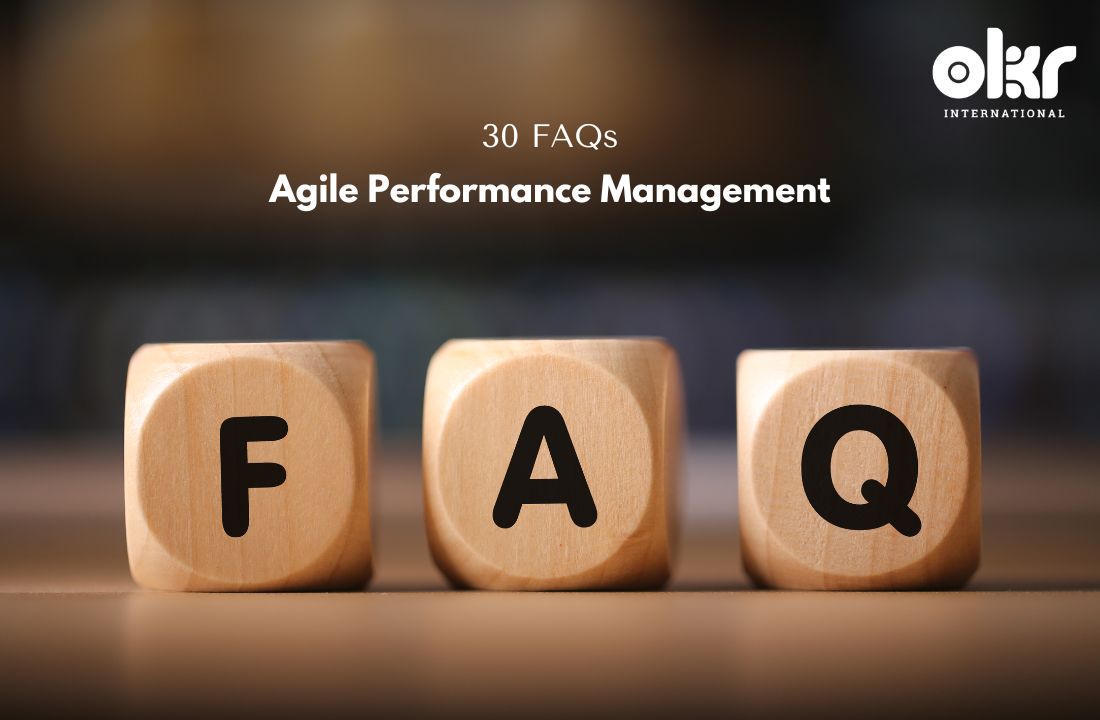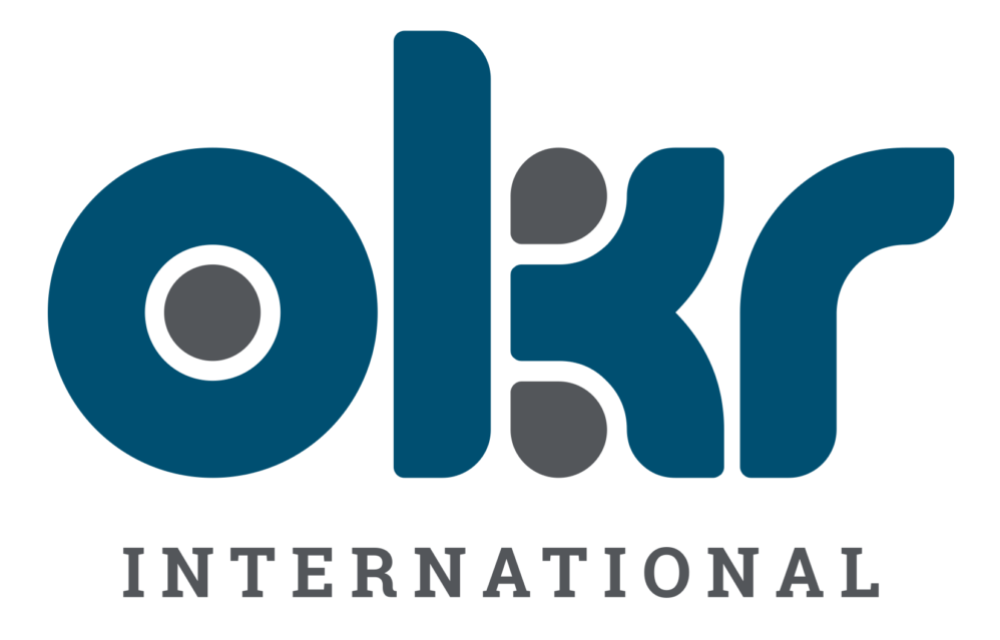A comprehensive list of FAQS answered through our first hand experience in implementing Agile Performance Management.
WHAT IS AGILE PERFORMANCE MANAGEMENT?
Agile performance management is a modern approach to managing employee performance in a more flexible and collaborative way. It involves setting shorter-term goals, providing regular feedback, and incorporating continuous learning and development.
WHAT ARE THE BENEFITS OF AGILE PERFORMANCE MANAGEMENT?
Agile performance management is not a one-size-fits-all solution. Every organization is unique, and what works for one company may not work for another. Similarly, no two organisations may derive the same benefits from implementing an agile performance management system.
Benefits for CEOs
· Bridge the strategy to execution gap.
· Quicker, more effective alignment between teams and goals.
· High performance culture & outcome-driven organisation.
· View of the entire organisation’s performance in real time.
· Flexible & adaptive system that suits changing business needs.
· Increase discretionary effort from employees.
Benefits for CHROs
· Making PMS a more pro-active exercise.
· Improved people attrition, absenteeism & engagement.
· Identify, develop, retain, and promote high-potential employees.
· Differential and dynamic reward systems.
· Empower line-managers as custodians of performance.
· People analytics on Digi-tech platform.
Benefits for Line Managers
· Real-time view of team performance.
· Better productivity from teams.
· Reduction in annual review burden.
· Better alignment & ownership from team members.
· Clear expectations from team members using OKRs.
· Become an enabler, not evaluator, of performance.
· Decrease in escalations to higher management.
Benefits for Employees
· Real-time inputs to improve performance.
· Clarity of goals & job significance.
· High levels of transparency & reduced bias.
· Frequent reviews & coaching conversations.
· Reduced angst & time in completing performance reviews.
· Be set up for success vs. be evaluated against a standard.
· More collaboration with teammates vs. unnecessary competition.
WHAT ARE THE CORE PRINCIPLES OF AGILE PERFORMANCE MANAGEMENT?
Agile performance management systems are designed to be flexible, iterative, and responsive to change, and they are built on a set of principles that guide their implementation. Some of the key principles of agile performance management systems include:
1. Transparency: Clear, measurable goals that are aligned with the organization’s strategy and mission.
2. Flexibility & Adaptability: Evaluating performance at regular intervals rather than once or twice in a year.
3. Collaborative Goal-Setting: Pivot goals and priorities using OKRs using a social process of collaboration.
4. Feedforward Mindset: Regular proactive conversations that enable success for teams and employees.
5. Psychological Safety: Culture of inclusion encouraging experimentation & fail-fast mindsets.
6. Differential Rewards: Based on their individual performance, skills, experience, and contribution to the organization.
WHAT ARE SOME KEY FEATURES OF AN AGILE PERFORMANCE MANAGEMENT SYSTEM?
Agile Performance Management is an approach to performance management that is characterized by its focus on frequent feedback, collaboration, and adaptability. It involves setting goals, measuring progress, and providing feedback on an ongoing basis, rather than just once or twice a year. Agile Performance Management recognizes that traditional performance management systems often create more problems than they solve. Annual performance reviews can be stressful for both employees and managers, and they may not provide enough information for employees to improve their performance.
Here are the key features of an Agile Performance System:
– Clear Alignment with Organisational Northstar: Goal setting using OKRs with common goals aligned to company purpose & strategy.
– Shorter Performance Cycles: Supported by regular check-ins, coaching & feedforward conversations, and celebrations.
– Multi-Directional Alignment: Departure from cascading goals towards top-down, bottom-up and cross alignment.
– Digi-Tech Enabled: Digitisation of PMS with real-time analytics on performance metrics & outcomes.
– Robust Learning Cycles: Continuous & contextual people development that is contextual to business needs.
– Departure from Bell Curves: Better alternatives to forced ranking and differentiation in performance.
CAN YOU COMBINE OKRs WITH AGILE PERFORMANCE MANAGEMENT?
Yes, it’s possible to combine OKRs with Agile Performance Management. More and more organisations are looking at doing this. However, there are some areas to watch out for, as it can be a tricky exercise. Read more on how to combine OKRs with Agile PMS.
HOW CAN ORGANIZATIONS IMPLEMENT AN AGILE PERFORMANCE MANAGEMENT SYSTEM?
To successfully implement agile performance management, organizations may need to take a number of steps. Here are some key considerations:
Get buy-in from leadership: To successfully implement agile performance management, it’s important to get buy-in from leadership. They should understand the benefits of an agile approach and be willing to make the necessary changes to culture and processes.
Train managers: Managers play a critical role in agile performance management. They should be trained in effective feedback, coaching, and goal-setting. They should also understand how to provide regular support and development opportunities to their team members.
Set expectations: Employees should understand what to expect from an agile performance management system. They should know how often they will meet with their managers, how feedback will be provided, and how performance will be measured.
Use technology: There are many tools and platforms available that can support agile performance management. For example, there are software applications that allow for real-time feedback and goal-tracking.
Monitor and adjust: Agile performance management is an iterative process. It’s important to regularly monitor progress and make adjustments as needed. This may involve tweaking goals or development plans, or changing the frequency or format of check-ins.
WHAT ARE SOME COMMON CHALLENGES OF IMPLEMENTING AGILE PERFORMANCE MANAGEMENT?
One potential challenge that organizations may face during implementation is resistance to change. Some managers and employees may be used to the traditional performance review process and may be hesitant to adopt a new approach. To address this challenge, it may be helpful to communicate the benefits of an agile approach and involve employees in the process. By soliciting feedback and ideas from employees, organizations can help create buy-in and support for the new system.
Another challenge that may arise is the need for more frequent communication and coordination between managers and employees. Regular check-ins and feedback require time and effort, and some managers may struggle to balance this with their other responsibilities. To address this challenge, organizations may need to provide additional training or support to managers to help them manage their time and priorities effectively.
Finally, organizations may struggle to create a culture of continuous improvement and development. While agile performance management can support this type of culture, it requires a shift in mindset and approach. To overcome this challenge, organizations may need to model the behavior they want to see and provide support and resources for employees to grow and develop.
HOW CAN ORGANIZATIONS OVERCOME THESE CHALLENGES?
To overcome these challenges, organizations can provide training and support to managers and employees to help them adapt to the new approach. They can also provide clear guidance and expectations around goal setting and feedback, and regularly evaluate and adjust their processes to ensure they are working effectively.
HOW CAN AN AGILE PERFORMANCE MANAGEMENT SYSTEM SUPPORT REMOTE OR DISTRIBUTED TEAMS?
It can support remote or distributed teams by providing more frequent communication and feedback, as well as flexible goal setting and ongoing learning opportunities that can be accessed remotely. It can also help to build a sense of collaboration and teamwork among team members who may be working in different locations.
WHAT ROLE DO TECHNOLOGY AND TOOLS PLAY IN AGILE PERFORMANCE MANAGEMENT?
Technology and tools can play a significant, supportive role. They can facilitate more frequent communication and feedback, provide a platform for tracking and managing goals, and offer opportunities for ongoing learning and development.
HOW DOES AGILE PERFORMANCE MANAGEMENT IMPACT EMPLOYEE ENGAGEMENT AND RETENTION?
Agile performance management can have a positive impact on employee engagement and retention by providing employees with more frequent feedback and opportunities for growth and development. It can also help to build a culture of collaboration and transparency, which can improve employee satisfaction and loyalty.
CAN AGILE PERFORMANCE MANAGEMENT BE APPLIED TO ALL TYPES OF ORGANIZATIONS?
It can be applied to a wide range of organizations, although the specific implementation may vary depending on the organization’s size, structure, and culture. However, organizations that are highly hierarchical or have a more traditional approach to management may find it more challenging to adopt an agile approach.
HOW DOES AGILE PERFORMANCE MANAGEMENT ALIGN WITH OTHER HR PRACTICES, SUCH AS COMPENSATION AND BENEFITS?
It can align with other HR practices by incorporating them into the overall approach. For example, compensation and benefits can be tied to individual and team performance goals, and ongoing learning and development opportunities can be incorporated into career development plans.
WHAT ARE SOME POTENTIAL DRAWBACKS OF AN AGILE PERFORMANCE MANAGEMENT SYSTEM?
Some potential drawbacks include the need for more frequent communication and feedback, which can be time-consuming, and the potential for goals to become too flexible and ambiguous, leading to a lack of clarity and direction.
HOW CAN ORGANIZATIONS EVALUATE THE EFFECTIVENESS OF THEIR AGILE PERFORMANCE MANAGEMENT APPROACH?
Organizations can evaluate the effectiveness of their approach by collecting feedback from employees and managers, tracking performance metrics such as employee engagement and productivity, and regularly reviewing and adjusting their processes to ensure they are meeting their goals.
HOW CAN AGILE PERFORMANCE MANAGEMENT HELP TO SUPPORT DIVERSITY, EQUITY, AND INCLUSION (DEI) IN THE WORKPLACE?
It can support DEI in the workplace by providing opportunities for more frequent communication and feedback, which can help to address unconscious biases and ensure that all employees are receiving fair and equitable treatment. It can also help to identify and address areas for improvement in terms of diversity and inclusion.
WHAT ROLE DO MANAGERS PLAY IN AN AGILE PERFORMANCE MANAGEMENT SYSTEM?
Managers play a critical role as they are responsible for setting goals, providing feedback, and supporting employee growth and development. They also play a role in building a culture of collaboration and transparency, which can support the success of agile performance management.
HOW CAN EMPLOYEES PARTICIPATE IN AN AGILE PERFORMANCE MANAGEMENT SYSTEM?
Employees can participate by setting their own goals, providing feedback to their managers and peers, and seeking out learning and development opportunities. They can also contribute to building a culture of collaboration and transparency by sharing their own perspectives and ideas.
HOW CAN AGILE PERFORMANCE MANAGEMENT HELP TO SUPPORT ORGANIZATIONAL AGILITY AND INNOVATION?
It can help to support organizational agility and innovation by providing a framework for continuous learning and development, promoting collaboration and transparency, and encouraging employees to take risks and try new approaches. It can also help to identify and address areas for improvement more quickly, which can support organizational agility.
HOW CAN ORGANIZATIONS SCALE AGILE PERFORMANCE MANAGEMENT AS THEY GROW?
As organizations grow, they can scale by establishing clear processes and guidelines, providing training and support to managers and employees, and leveraging technology and tools to facilitate communication and goal tracking. They can also regularly evaluate and adjust their processes to ensure they are working effectively.
HOW CAN ORGANIZATIONS GET STARTED WITH IMPLEMENTING AGILE PERFORMANCE MANAGEMENT?
To get started with implementation, organizations can start by rethinking their performance management processes and identifying areas for improvement. They can then establish clear goals and expectations, provide training and support to managers and employees, and incorporate ongoing learning and development opportunities. They can also leverage technology and tools to facilitate communication and goal tracking.
HOW DOES AN AGILE PERFORMANCE MANAGEMENT SYSTEM ALIGN WITH AGILE METHODOLOGIES, SUCH AS SCRUM AND KANBAN?
An Agile PMS aligns with agile methodologies such as Scrum and Kanban by incorporating the same principles of continuous learning, collaboration, and iterative improvement. It emphasizes frequent communication and feedback, encourages employees to take ownership of their work and goals, and provides a framework for ongoing learning and development.
HOW DOES AGILE PERFORMANCE MANAGEMENT DIFFER FROM TRADITIONAL PERFORMANCE MANAGEMENT?
It differs from traditional performance management in several ways. It is more focused on ongoing learning and development, rather than just annual reviews. It also emphasizes frequent communication and feedback, rather than a one-time evaluation. Additionally, it is more flexible and adaptable, allowing for goals to be adjusted and refined over time.
HOW CAN AN AGILE PERFORMANCE MANAGEMENT SYSTEM HELP TO IMPROVE BUSINESS OUTCOMES?
Agile performance management can help to improve business outcomes by promoting employee engagement and satisfaction, which can lead to increased productivity and retention. It can also help to identify and address areas for improvement more quickly, leading to improved performance and innovation.
HOW CAN ORGANIZATIONS ENSURE THAT AGILE PERFORMANCE MANAGEMENT IS ALIGNED WITH THEIR OVERALL BUSINESS STRATEGY?
Organizations can ensure that it is aligned with their overall business strategy by establishing clear goals and expectations, regularly reviewing and adjusting processes, and incorporating feedback from employees and stakeholders. They can also ensure that performance management is integrated with other HR practices and business functions, such as compensation and benefits.
HOW CAN ORGANIZATIONS ADDRESS RESISTANCE TO CHANGE WHEN IMPLEMENTING AGILE PERFORMANCE MANAGEMENT?
Organizations can address resistance to change during implementation by providing clear communication and education about the benefits of the approach, involving employees in the process, and addressing any concerns or questions. They can also provide training and support to managers and employees to help them adjust to the new approach.
HOW CAN AN AGILE PERFORMANCE MANAGEMENT SYSTEM HELP TO PROMOTE EMPLOYEE AUTONOMY AND EMPOWERMENT?
It can help to promote employee autonomy and empowerment by encouraging employees to take ownership of their work and goals, providing frequent feedback and opportunities for growth, and empowering them to make decisions and take risks.
HOW CAN ORGANIZATIONS ENSURE THAT AGILE PERFORMANCE MANAGEMENT IS FAIR AND EQUITABLE?
Organizations can ensure that it is fair and equitable by establishing clear goals and expectations, providing objective feedback, and addressing unconscious biases. They can also ensure that compensation and benefits are tied to individual and team performance, and that opportunities for learning and development are available to all employees.
HOW CAN AGILE PERFORMANCE MANAGEMENT SYSTEMS HELP TO ADDRESS THE CHALLENGES OF A RAPIDLY CHANGING BUSINESS ENVIRONMENT?
Agile PMS can help to address the challenges of a rapidly changing business environment by providing a framework for continuous learning and development, promoting collaboration and transparency, and allowing for flexibility and adaptability. It can also help to identify and address areas for improvement more quickly, which can support organizational agility and innovation.
WHAT ARE SOME BEST PRACTICES FOR IMPLEMENTING AN AGILE PERFORMANCE MANAGEMENT SYSTEM?
Some best practices for implementing an agile PMS include setting clear goals and expectations, providing regular feedback and opportunities for growth, promoting a culture of transparency and collaboration, leveraging technology and tools, and regularly evaluating and adjusting processes to ensure they are meeting goals. It is also important to involve employees and stakeholders in the process and to provide training and support to managers and employees.
The Gold Standard in Agile Performance Management
Future workplaces need to thrive in a rapidly changing environment. An agile performance management system provides an organisation with the wireframe to prosper in a marketplace riddled with volatility, uncertainty, complexity and ambiguity.
- Integrate OKRs & Performance Management System
- Bridge the gap between strategy & execution
- Go beyond the traditional bell curve
- Increase employee engagement & productivity




